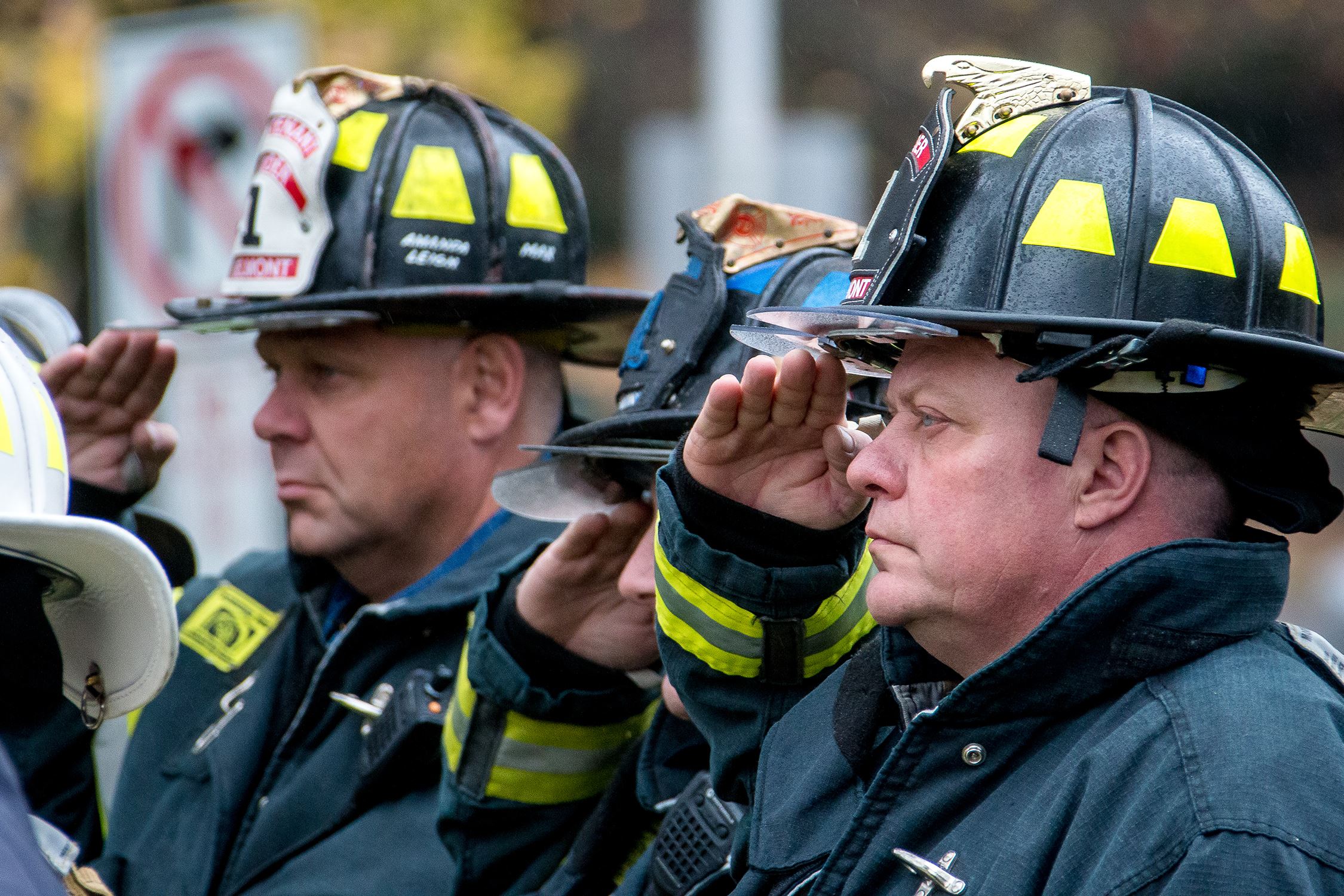
Four years ago today, the U.S. officially observed its first National First Responders Day. Created to honor women and men who are the first on the scene of an emergency, we celebrate police, paramedics, firefighters, EMTs, nurses, other medical staff, and 911 dispatchers.
The origins of National First Responders Day date back to 2013, when police officer Sean Collier was killed while responding to the scene of the Boston Marathon bombing. On behalf of Sean and every first responder who faces unknown dangers in order to protect citizens, Sean’s brother Andrew Collier began a campaign to grant our everyday heroes a national day of recognition.
Honoring First Responders’ Fight for Safety
The incredible service of first responders requires putting themselves in harm’s way first, often before knowing the full extent of the emergency or the danger to themselves and others. We owe these women and men our fullest support, including fighting for their safety and protection.
However, there is an extra element of danger these first responders face, which has nothing to do with the disasters they’re fighting. For decades, the very equipment they used and the buildings where they helped those in distress posed the danger of asbestos. As a result, our first responders are afflicted with debilitating and life-threatening health conditions, including asbestos lung cancer, and mesothelioma, with firefighters consistently exposed to higher levels of the toxic material.
The Deadly Risks of Asbestos
Asbestos is an odorless, tasteless mineral fiber that occurs naturally in rock and soil and has been mined by hand for centuries. Workers chip away at minerals such as talc, vermiculite, or serpentine rock to extract deposits of asbestos found inside. The quarried asbestos is then spun and molded into usable forms.
Because asbestos fibers are flexible, lightweight, strong, and naturally heat resistant, it was commonly used as insulation or to strengthen other materials. However, when products made with asbestos are disturbed, whether, from installation, cleaning, repair, or removal, millions of undetectable asbestos fibers can be released into the air. The tiny, airborne asbestos fibers can then be inhaled or swallowed. Once lodged inside the lungs, soft tissues, or other organs, asbestos causes lasting and often fatal damage.
The Heightened Risk for Firefighters
All first responders are at risk for asbestos exposure because they serve people in buildings containing asbestos materials. While no longer used in new construction, older buildings can be filled with asbestos in their insulation, flooring, roof shingles, tiles, pipes and ducts, adhesives, boilers, furnaces, and fireproofing materials. When these buildings are damaged by fire, flood, storms, other natural disasters, or due to human forces, all first responders on the scene are exposed to asbestos fibers on their skin and in their lungs.
And because of the very nature of their work, firefighters are at the greatest risk of all—in fact, they are more than twice as likely as other first responders to develop mesothelioma. At the scene of a fire, asbestos can be released into the air or found in debris and ashes. Even after the fire is extinguished, there is still a risk of asbestos exposure during site cleanup.
On top of these hazards, firefighters’ own safety equipment was made with asbestos for many years. Valued for its heat- and fireproofing properties, asbestos was woven into firesuits, gloves, blankets, and boots. Their fire trucks also contained asbestos in the brakes, gaskets, and hoses. Over time, wear and heat exposure could release asbestos fibers, as could regular maintenance and repair work.
Thankfully, firefighters and first responders today wear personal protective equipment like masks and respirators, and their uniforms no longer contain asbestos. But it’s hard to overstate the repeated and prolonged health risks firefighters have long faced, simply by wearing protective gear and showing up to save lives.
The Lasting Effects of 9/11
First responders, both in uniform and off duty, responded valiantly during the aftermath of 9/11. Many rushed toward or even into the World Trade Center with no protective equipment at all, exposing themselves to dust, glass, multiple carcinogens, and asbestos. For weeks to come, the air remained a hazard for victims and first responders.
9/11 became a major case study in the risks of toxic air to first responders. Some studies say that over 2,000 tons of asbestos and other toxic materials swirled in the plume that covered the city, affecting almost 100,000 first responders and half a million civilians. 40% of Many studies have been conducted, linking first responders’ lung cancer and mesothelioma to their asbestos exposure on 9/11.
While 9/11 has brought national attention to first responders’ exposure to health hazards on the job, there is still much that needs to be done to ensure that every individual is protected, every single day.
Resources for First Responders
If you or a loved one has been exposed to asbestos while serving as a First Responder, you can check with your union or your personnel office about medical coverage and benefits, safety protocols, and other support systems.
Advice and consultation about your legal options are also available from experienced attorneys who specialize in asbestos litigation. First Responders and their families may be able to file a personal injury or wrongful death lawsuits. Asbestos and mesothelioma trusts were established specifically to compensate victims when some asbestos companies filed for bankruptcy. Holding them accountable matters because their negligence shouldn’t leave you with the burden of medical expenses, lost wages, or funeral costs.
Being There First
Our lawyers at SWMW are so grateful to all first responders for their courage and commitment. We are all safer because they choose to show up first for the rest of us. We remain just as committed to helping those who were exposed to asbestos. If you want to learn more about your legal options, we are ready to listen and bring decades of experience fighting for victims and their families. We look forward to hearing from you.

